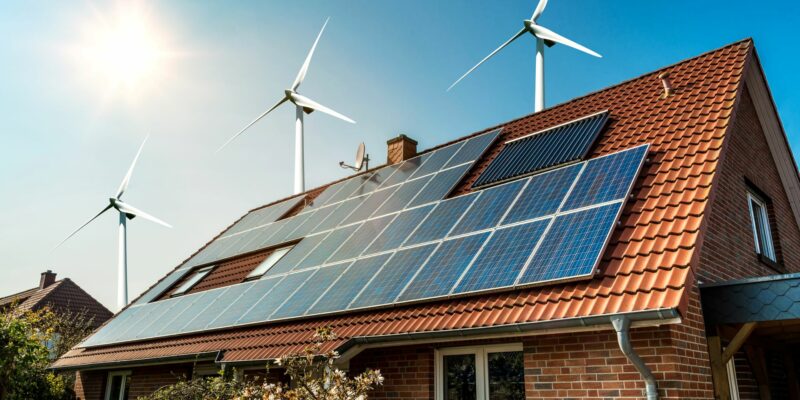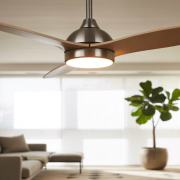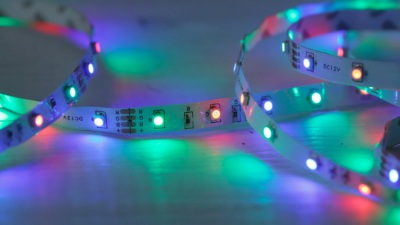Being a homeowner is an all-around job. Between keeping up with your livelihood and maintaining your home, learning to balance everything while finding time for yourself might seem impossible at first.
But, once you find your rhythm, you’ll get one step ahead of what used to give you so much trouble before.
However, no amount of preparation or ‘going with the times’ can help you when it comes to energy. Given how unpredictable the economy is, there’s no telling when costs will skyrocket or how long they’ll stay as is.
Because you’re going up against unpredictability, failing to keep up with your budgeting is always on the table. Fortunately, there are many solutions you can try to rein in the bills; one of them is renewable energy.
What Is Renewable Energy?
Most households utilize energy for their day-to-day. Considering how technology is deeply integrated with one’s life, some would claim it’s impossible to part ways with energy completely.
But, when they say that, the only thing they might have in mind is electricity. Little did they know that more alternatives are available that can still power most home appliances., and these fall under renewable energy.
From the name alone, renewable energy is an energy source that’s near-unlimited. Compared to electricity, it naturally replenishes itself consistently. That’s why it slowly grew in popularity over the years, especially in residential areas.
After all, finding an opportunity to save energy without getting rid of some electronics takes a lot of work. The only thing homeowners must do is look for the right tools to harness this type of energy.
What You Can Use For A Household
Harnessing sunlight used to be an idea that could only be read in fairytales. But, nowadays, given how many technological advances have been made, sunlight is only one of the elements that humans can manipulate.
Despite how impressive that is, what’s even better is how accessible it is for everyone, whether you’re an entrepreneur or a simple homeowner.
Considering the number of renewable energy sources that exist, homeowners have a handful of options to choose from, such as:
1. Solar Power
Since it’s a form of energy emitted by the sun, it’s one of the most popular renewable energy sources on the list. And, it helps that some countries have tropical climates. They can take advantage of the abundant sunlight and transform it into energy or store it for later use. Because of its popularity, Smart Solar Energy and other solar companies have various types of equipment designed for different purposes, such as:
2. Solar Panels
Most residences have solar panels installed on their roofing systems. Using photovoltaic (PV) cells, such panels convert sunlight into electricity. But, despite their straightforward purpose, they have different types of which homeowners must be aware, namely monocrystalline, polycrystalline, and thin-film solar panels.
Monocrystalline solar panels are the most energy-efficient type since they’re made from a single silicon crystal. But, because their manufacturing is extremely intensive, their excellent energy efficiency is balanced by their costly price tag.
Polycrystalline solar panels created from the wasted silicon when manufacturing monocrystalline solar panels became a solid middle ground from all three types of solar panels.
Unlike the former, it’s made of silicon fragments, which means it’s not as energy-efficient. However, since it’s repurposed from the manufacturing process behind monocrystalline, more homeowners can purchase it because it’s cheaper.
Lastly, thin-film solar panels are the best option for households with a tight budget yet still interested in utilizing renewable energy. After all, only a thin layer of silicon or any other semiconductive material is combined with other materials, such as plastic, metal, or glass. Its cheap price is balanced out by its low energy efficiency.
3. Solar Oven
Installing roof solar panels is an extremely daunting project, especially for those with above-average-sized homes and if it’s their first-time handling anything related to renewable energy.
If you’re not yet ready to make such a large investment, consider trying out solar ovens first. Granted, how they function almost sounds like they came straight out of a science fair.
As the name implies, a solar oven is designed to heat food using sunlight. However, don’t expect it to have a similar design to electric or gas-powered ovens. It consists of three main parts: the collector, reflectors, and transparent lid.
The collector is where you put the dish you want to cook since it features a dark interior surface that absorbs the sunlight that bounces off the reflectors. The reflector is what you adjust to redirect sunlight and aim it where you want it to increase the temperature inside the collector.
Sunlight is kept within the collector since there’s a transparent lid trapping it inside while letting in more to keep warming the food.
4. Solar Temperature Regulation System

The insulated walls and the HVAC unit can only do so much against the peak of summer and the worst of winter. Because even though you’re already using every trick in the book, you’re still likely to suffer the consequences once the electric bill comes in. Instead of depending on electricity too much, consider using solar energy to power your heating and cooling systems.
Similar to ordinary solar panels, solar heating and cooling panels are mounted onto the roof. But, considering they’re only for temperature regulation, these panels can also be installed on a free-standing frame or hung from a wall. Depending on their size, they can even heat water from a water tank, so you have hot water during the cold season.
These are some of your best choices when planning to make that switch to solar. Go for one that’ll be cost-efficient in the long run.
5. Hydroelectricity
Considering the world is made up of 70% water, it only makes sense to utilize it for other purposes. And, with the weather system freely contributing to the water cycle, the water source is near-limitless. That’s why some countries use hydroelectric dams to create electricity from water sources.
However, hydroelectricity is less popular than solar or wind power on scales as small as households. Because for a residence to create hydroelectricity, they must have a steady water source nearby—bonus points if your property already has one.
Once you’ve located the source, designate an area where you’ll set up the hydroelectric generator. Ensure it has a large vertical distance from the water source to ensure the water diverted through it remains steady.
Although only some households use hydroelectricity, it’s still preferable compared to solar and wind power. As long as the water source is stable, its energy production will stay consistent. That’s why homeowners must take care of their water source diligently.
6. Wind Power
Next to solar energy, wind power is another popular option among homeowners, especially for households in remote locations, such as open lands.
After all, as long as the wind blows in the area, your home can receive as much energy as possible to take over your power supply. However, there are two methods of harnessing wind power: wind turbines and air-to-heat pumps.
Wind turbines are the most popular option, considering they create enough electricity to power the entire house. Unfortunately, there are many downsides to using them. Since it’s impossible to harness the wind with only small equipment, residential wind turbines normally stand as tall as two-story houses.
While they process wind energy, creating electricity isn’t a quiet affair since they also create plenty of noise. Because of this, setting up a turbine when you’re living in an apartment or the suburbs could get you complaints.
Aside from disturbing the peace in the neighborhood, wind turbines also impact the local wildlife. Consult local laws and zoning regulations before installing one.
As for air-to-heat pumps, they work similarly to a refrigerator. Because instead of absorbing heat and transferring it outside, they extract energy from the outside air to distribute it throughout your home. Although, its efficiency is hindered once the cold season starts.
7. Geothermal Energy (Geothermal Heat Pump)
Heat emanates underground as geothermal energy. Like most things, rocks undergo a cycle that causes them to decay over time into radioactive matter near the Earth’s core, producing heat.
Even though the surface isn’t as hot as the mantle or core, it creates enough heat to produce energy using geothermal heat pumps. Since the heat from the Earth is constant, the energy it produces is much more stable than its air counterparts.
8. Biomass Energy
As the name implies, biomass energy is extracted from organic material, such as plants and animals. Although it resembles the more hazardous approach of burning fossil fuels, it’s less dangerous, considering it can burn organic waste materials on top of normal materials.
For example, burning sawdust and wood chippings to produce biomass energy instead of leaving them to decompose is a much better alternative since they produce high carbon emissions.
9. Natural Light
Compared to other renewable energy, natural light offers nothing but visibility. But, despite how ‘small’ its contribution may seem, having natural light come in through windows or tubular skylights reduces electrical consumption throughout the day.
Additionally, natural light could give your home an open and refreshing look that electrical lights can’t provide.
Takeaway
Budgeting is always arduous for homeowners, especially those who have nine-to-five jobs. On top of keeping track of your basic needs, you’re supposed to take note of maintaining your home.
Otherwise, its comfort level will be impacted. But, instead of cutting costs to keep up with energy prices, turning to renewable energy is the better alternative for quality energy efficiency.













[…] make it so the value of your home can go up via solar. Here’s what you need to know about how investing in solar energy can give back to […]
[…] and communities can significantly reduce greenhouse gas emissions by choosing solar power. This shift to renewable energy helps combat climate change and creates a healthier and more sustainable […]